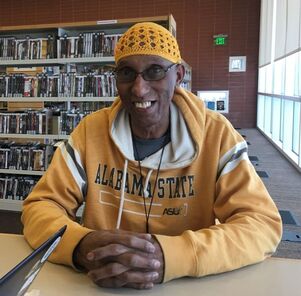Bob Render

PROFILE OF COMMUNITY MEMBER BOB RENDER: WHAT DOES IT MEAN TO GET INVOLVED?
“When people get engaged, crime goes down, quality of life goes up and safety and security go up.”
And Bob Render would know. Growing up in the Fairfax neighborhood, Render recalls how a tradition of taking care of one’s neighbors, what King might have called “The Beloved Community,” pervaded his neighborhood. He remembers how neighbors would always offer a snack or a meal to one another, how people would take care of each other when someone fell on hard times, and how doors were left unlocked without a second thought. Additionally, street clubs were widespread. Almost every street had an active group of residents who provided a platform for conversation, goal-setting, and change on the street level.
Render’s experience growing up in such a strong community would have a lasting influence on him. He would go on to become a social worker and remain active in the political arena for most of his life. Over the years he would also move several times, always bringing the idea of the street club with him. For example, in 1992, when Render moved into a house on East 128th, he joined his new neighbor, the late Dororthy M. Miller, to start a street club there. Their first priority was to address rising crime in the neighborhood. The street club organized home owners to install lawn lights in their front yards and utility pole lights in their backyards. The result was a display so bright that TV 8 ran a feature on it titled “The Miracle on East 128th Street.” 128th Street was also a repeat winner of the Bright and Beautiful Block Contest – a former annual competition among streets to look the cleanest and sharpest. Render’s street won the contest five times. These projects engaged the community and had real results. Within two years of re-establishing the street club, E. 128th saw a 75% decrease in calls for service by the police.
Render wasn’t solely concerned about his own street – he had a vision for active street clubs throughout the area working together to create a secure place where people could thrive. The Buckeye Neighborhood Coalition was a piece of this vision which brought nearby street clubs together as a larger force. However, today, many of these street clubs have dissipated. Render notes that as the neighborhoods become less secure, it becomes more difficult to find people who are able and willing to take on leadership roles within the community. He says that many fear criticism from neighbors and retaliation from those who have found ways to benefit from the lack of security.
Moreover, the top-down solutions that have been put in place over the years have failed to regenerate the sense of community and purpose that fueled initiatives like the Bright and Beautiful Block Contest years ago. Render cites the Buckeye Development Corporation’s failure to accurately reflect and act upon the needs of the community as a key issue. He remembers that when the CDC was started, all the board members were white, while the community it was supposed to be acting for was mostly black. Furthermore, the CDC operated “as a closed shop.” Despite claims made to transparency and open meetings, it was difficult for community members to find out when the “public” meetings were being held. Still, Render and other community activists have been pushing for progress towards a safe, healthy, thriving Buckeye community. For example, Render is currently working on an initiative to increase security in the neighborhood by empowering property owners and residents with cameras and other technologies. Render is also excited about fostering new leadership within the club and sees a bright future in the new vice presidents Ali Jamal Boyd and Joy Johnson.
Render, as a long-time resident, can see the potential that the Buckeye neighborhood holds. While the intersection of issues such as poverty, racism, mental health, and drugs has led many to give up on the type of community Render describes growing up, he and other activists know that we have the ability to turn it all around. He also knows that just as it took years for the community spirit he remembers as a child to collapse, it will take years to rekindle. Render sees sustained change as coming from both the bottom-up and top-down. So just as investment dollars and government support are needed, so is hope and active participation from residents.
Render believes that the key to making progress is to find ways to engage people. Showing up will not be enough and nothing can substitute for getting involved. Render’s own path sets an example of what getting deeply involved can look like.
